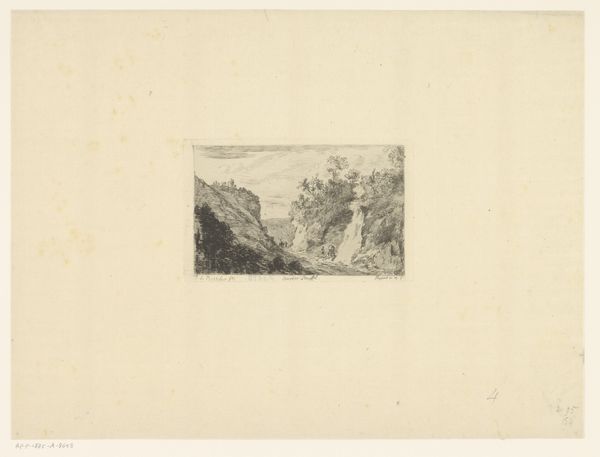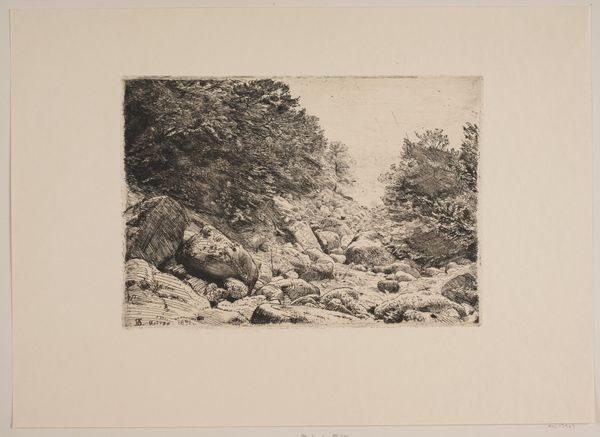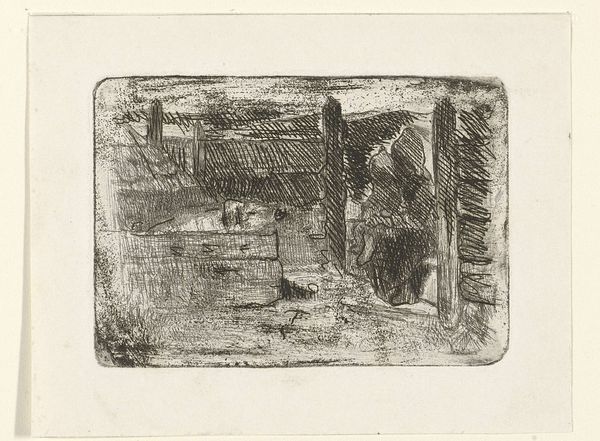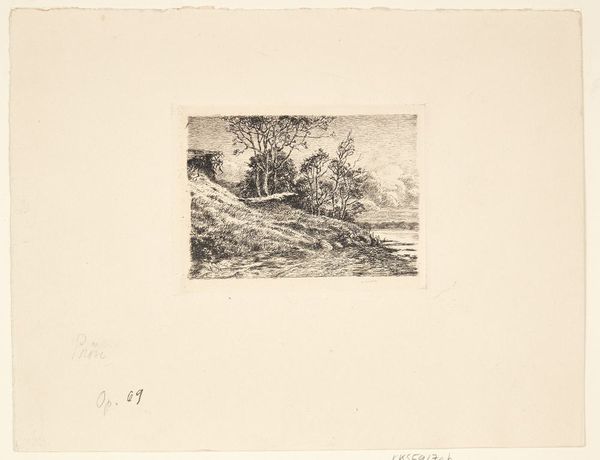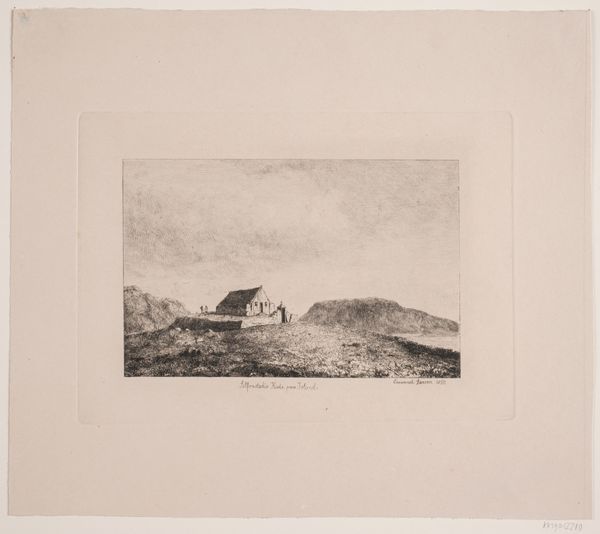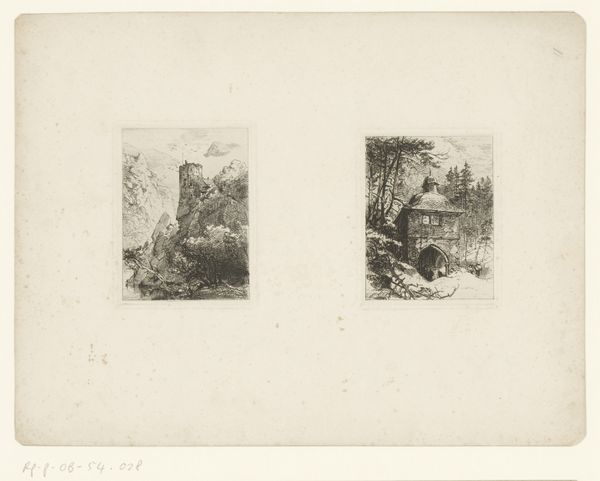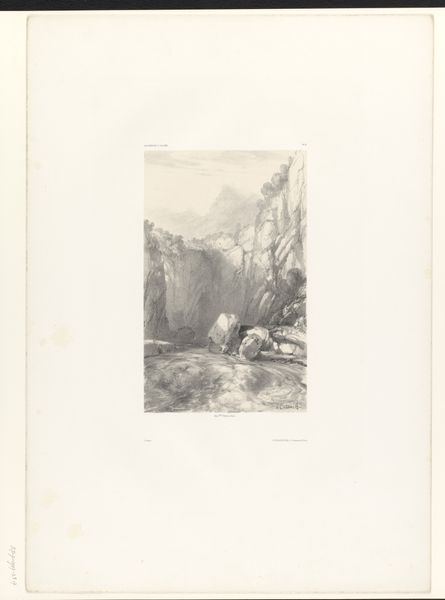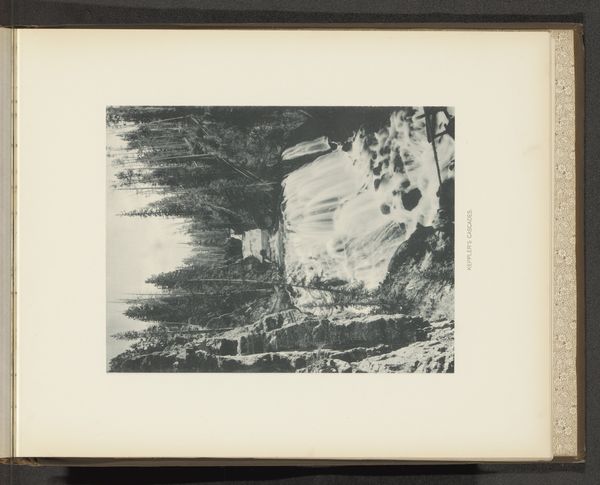
print, etching
# print
#
etching
#
landscape
#
road
#
cityscape
Dimensions: height 135 mm, width 149 mm
Copyright: Rijks Museum: Open Domain
Curator: This etching by Maurits van der Valk, titled "Huizen langs een weg," or "Houses Along a Road," dates from between 1867 and 1935, and is currently held here at the Rijksmuseum. Editor: My first thought is: quiet. The monochromatic tones, the almost hazy way the image is rendered – it evokes a feeling of stillness, doesn’t it? The eye is drawn to the buildings and road, not bustling figures. Curator: Indeed. I think what’s critical here is understanding this print not just as a picture of houses, but within the context of urbanization and rural change. Van der Valk lived through significant social shifts and this work, I’d argue, quietly speaks to that experience. Consider the unpaved road. Is it a statement on forgotten communities or just a reflection of mundane reality? Editor: That’s a valid point. I'm thinking about accessibility and who the intended audience was. Prints like these circulated widely, making art available to people who might not have had access to galleries. Were these images then subtly pushing a socio-political agenda through widespread dissemination, perhaps idealizing a way of life being impacted? Curator: Exactly! The seeming simplicity is deceptive. Notice the deliberate, muted palette, the absence of distinct class markers, and how the dwellings themselves lack overt symbols of wealth or poverty. By obscuring such markers, perhaps he encourages us to see something else about these homes and their residents. Editor: The scale too contributes to this. A small etching like this feels quite intimate. You can examine the fine details of the thatching, the slight irregularities of the walls. Does it seek to dignify the everyday, or maybe subtly romanticize an unadulterated way of living removed from the speed and scale of a city? Curator: That’s interesting to consider. Certainly, we see many artists responding to industrialisation during that period. And to have examples like these in the public domain, as well, reminds us that these stories are there for us to think about through an intersectional lens. Editor: Absolutely. And, regardless of Van der Valk's explicit intentions, artworks from this era give a peek into the era's underlying discussions and perspectives on society. A tangible way of understanding that social flux you mentioned earlier. Curator: I find that even this brief consideration gives such richer depth to these houses, and I now find myself pondering the impact of accessibility, representation and the gaze with renewed perspective. Editor: Precisely. Sometimes a second look at the everyday provides greater revelations than at first meet the eye.
Comments
No comments
Be the first to comment and join the conversation on the ultimate creative platform.
